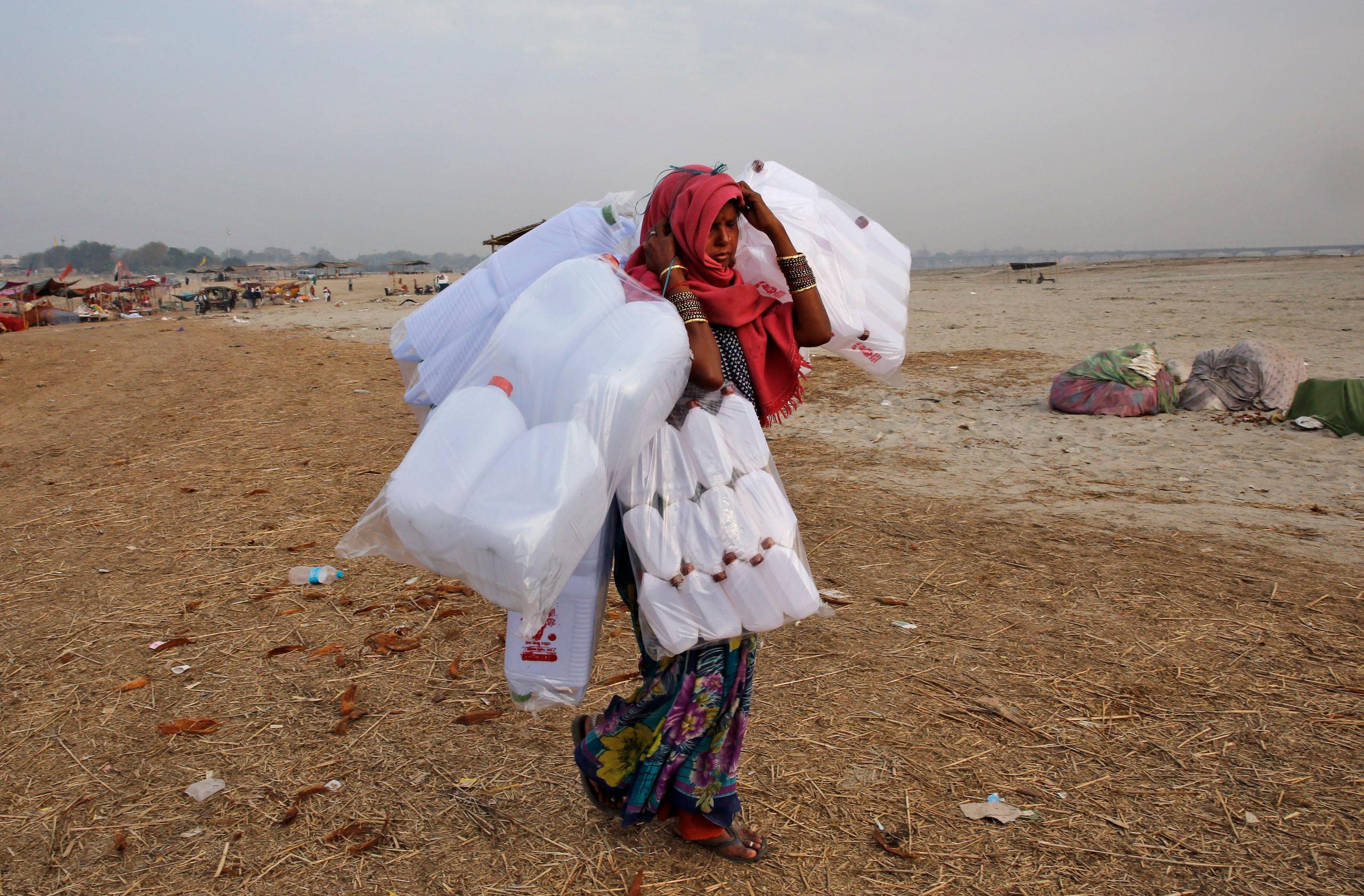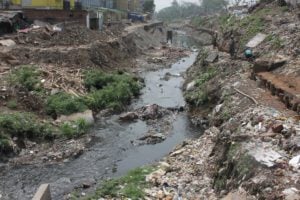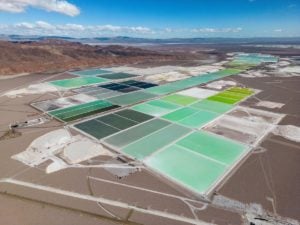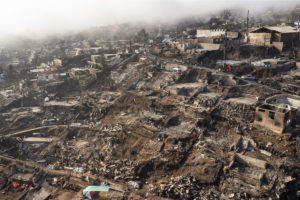“Humanity has exceeded a planetary boundary related to environmental pollutants including plastics” — announced an international team of researchers in 2022. The scientists who assessed the impact of the cocktail of synthetic chemicals and other “novel entities” (NE) flooding the environment on the stability of the Earth system concluded that plastics were “out of control”.
The science is clear on plastic pollution
Plastics epitomise the novel entities planetary boundary crisis, characterised by their enduring presence, mobile nature and pervasive environmental impact. Chemicals and plastics have negative effects on planetary health, from mining, fracking and the extraction of raw materials, to production and waste management, stretching from the Arctic to Antarctica. The multifaceted nature of plastic pollution compounds the challenge, with interactions among different substances yielding unforeseen and often synergistic effects on physical and ecological systems.
The concept of planetary boundaries, pioneered in 2009, provides a science-based framework for understanding the delicate balance of Earth’s systems.
Defined by nine critical processes, these boundaries delineate the safe operating space for humanity.
The relentless proliferation of novel entities poses an increasingly dire threat to the planet, transcending geographical boundaries and socioeconomic disparities.
Despite efforts at remediation, contaminated sites multiply, exacerbating the planetary burden and underscoring the inadequacy of current management strategies.
Recognising the urgency of the situation, there was a unanimous decision by 175 United Nations member states to negotiate a global and legally binding treaty that would tackle the entire life-cycle of plastic. Originally proposed by Peru and Rwanda, the Global Plastics Treaty, slated for finalisation by the end of 2024, would be the first ever instrument to address plastic pollution, and presents a critical opportunity for coordinated action on a global scale. The treaty’s ambit is vast, encompassing key aspects such as the extraction of fossil fuels, the design of plastics, their production, consumption, and associated waste management. By targeting each stage of the plastic life cycle, it acknowledges that merely addressing downstream waste management is insufficient and that meaningful progress requires systemic changes that tackle the root causes of plastic pollution, namely polymer production.
However, formidable challenges persist, exacerbated by the divergent interests of nations and industries vested in the status quo. The government of India has aligned with nations such as Saudi Arabia, Russia, China, the USA and Iran, all with significant plastic-petrochemical interests. Together, they insist that the Treaty should focus on downstream waste management. This reflects a blatant disregard for the scientific evidence surrounding climate change, plastic pollution and destabilised Earth systems.
Indian submission focus on trade laws
India’s submissions to the UNEP Secretariat reflect a perpetuation of a narrative that prioritises corporate profits and economic considerations over environmental sustainability and public health. One of the primary arguments raised by India pertains to the perceived conflict between the proposed treaty’s provisions and World Trade Organization (WTO) rules.While legitimate concerns regarding trade implications exist, India’s emphasis on this aspect risks overshadowing the urgent need for comprehensive and effective measures to address plastic pollution at its source. India’s invocation of the economic interests of poor and developing countries within the BRICS bloc serves to deflect attention from the broader imperative of combatting plastic pollution on a global scale.
Concurrently, India has announced a massive expansion of its petrochemical industry, and it aims to become a top exporter — even to countries that have expressed the desire for an ambitious and effective plastics treaty. The market dynamics, driven by profit motives and short-term gains, incentivise continued reliance on fossil fuels and cheap plastic production. Technological inertia, stemming from decades of investment in petrochemical infrastructure, is now also diversifying into plastic polymer production.
By framing the treaty’s objectives as potentially detrimental to economic growth, India disregards the science, undermines the urgency of the environmental crisis and sidesteps accountability for its own contributions to plastic pollution. Rather than align with the precautionary and polluter pays principles, India has adopted common but differentiated responsibilities as its main principle. By advocating for a reliance on National Action Plans and National Implementation Plans, India is sidestepping the need for collective, coordinated action on a global scale, perpetuating a fragmented approach that undermines the treaty’s efficacy. It has gone as far as to submit that “design standards for various products should be dependent on national circumstances and should not be harmonised at global level”.
Plastics are a sociopolitical as well as an environmental issue
The plastic crisis in India is not just an environmental issue but also a socioeconomic and justice concern. It is well known that in India approximately 70% of the polymers produced is used by the packaging sector and 70% of plastic products become waste in a short span. The staggering statistics highlight the magnitude of the plastic pollution crisis facing the country. Despite this alarming reality, the measures taken to address this issue thus far have been insufficient, with only a mere fraction — estimated at 2-3% — of single-use plastics being banned.
The prevailing narrative, in which plastics, such as sachets, are often touted as both pro-poor and pro-climate due to their affordability and purported environmental benefits, perpetuates a dangerous misconception. This narrative ignores the underlying reality: the true cost of plastics, both in terms of environmental degradation and socioeconomic inequality. Behind the facade of affordability lies a web of subsidies and incentives that artificially prop up the plastic industry. The heavily subsidised production of petrochemicals contribute to the illusion of cheap plastics.
Behind the facade of affordability lies a web of subsidies and incentives that artificially prop up the plastic industry
Communities worldwide bear the brunt of this crisis, with marginalised populations disproportionately affected. Those most affected by the plastic crisis, such as fishers, farmers, and Indigenous Peoples, are often those with the least power to influence change. Despite the mounting evidence linking plastics to climate change, health hazards, and social injustice, awareness remains low, particularly among vulnerable groups lacking access to information and resources.
Ultimately, India’s position in the United Nations Plastics Treaty negotiations reflects a prioritisation of short-term economic interests over long-term environmental sustainability and public health. To truly address the interconnected challenges of climate change, plastic pollution and destabilised Earth systems, India must reassess its stance and commit to ambitious, science-based measures that prioritise the well-being of both current and future generations.










